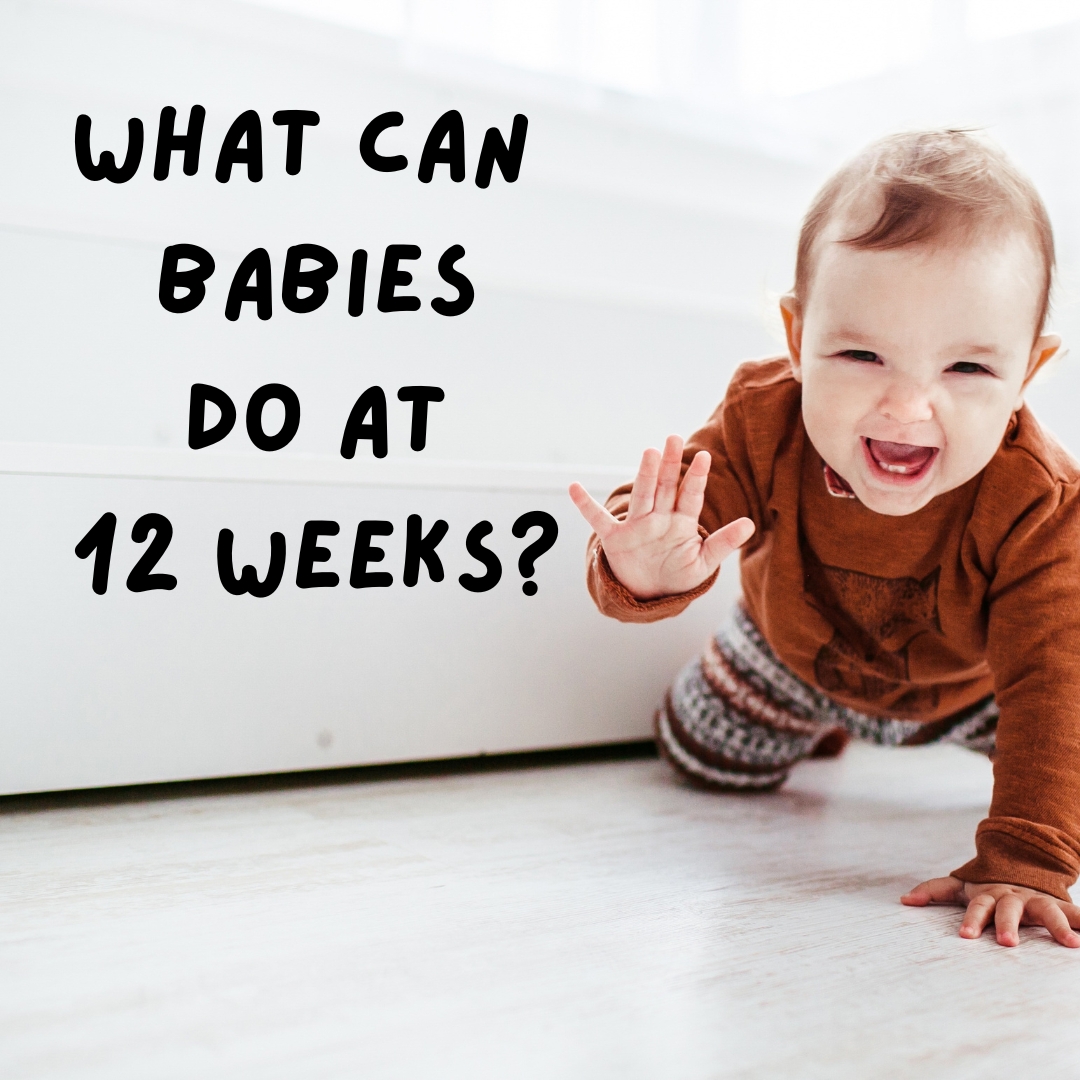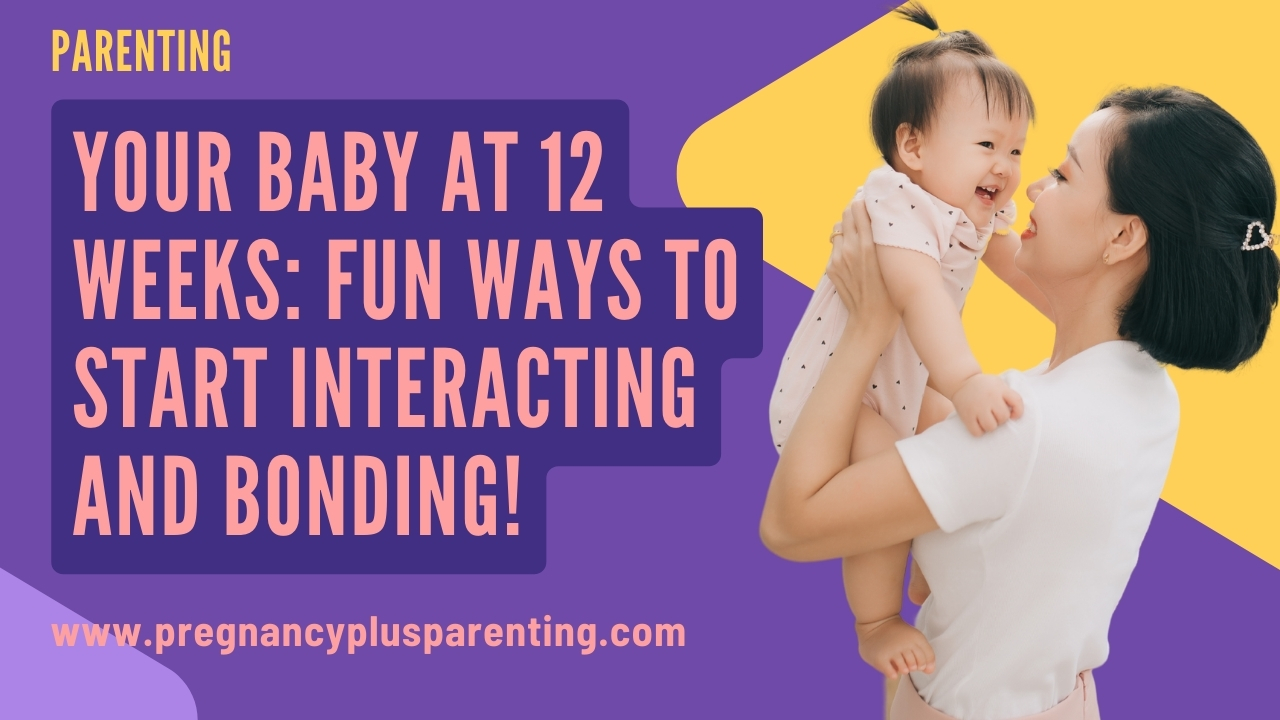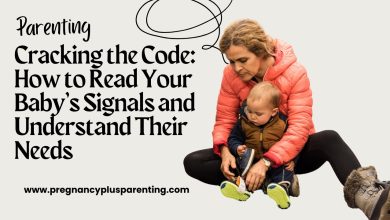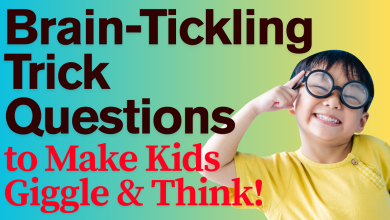Your Baby at 12 Weeks: Fun Ways to Start Interacting and Bonding!
Almost halfway through when your baby is 12 weeks old, because they are about to enter their third growth spurt of a total of eight in the first year of life.
It’s amazing how quickly the first leaps in development follow one another, isn’t it?
This often pushes parents to their limits. Help and support are important not only for the baby, who learns to understand the world of transitions during the 12-week growth spurt.
What do the different signals mean ? What skills does your child learn during this developmental leap, and why is it so important and challenging?
What about eating and sleeping habits? What medical examinations are needed? And what challenges should be considered?
In this article you will find the answers.
Baby 12-week spurt – signs
It has now been about three months since you first held your child in your arms.
Not only have you experienced a rollercoaster of emotions and states since then and have already overcome many challenges, but so has your baby during its rapid development.
The signs of each developmental leap are fundamentally similar.
Your baby is now 12 weeks old and has already had two growth spurts, so the signs of the 12-week spurt will probably sound familiar to you.
Is your little one starting to scream and cry more often? Is he or she constantly whining and complaining? Has he or she seemed more balanced lately?
Have your nights become noticeably more restless? Do you feel like your child is constantly hungry? Have you noticed their intense need for closeness?
These are all signs that your baby’s perception is changing again and his world is being realigned.
The little one is completely at the mercy of these developmental processes and needs your closeness to endure the big changes it is currently experiencing.
You can probably remember that after the last developmental phase, your baby was noticeably more independent than before.
But now there seems to be a relapse, because he won’t let you put him down without crying, and maybe he’s even going on strike while breastfeeding , even though you had just gotten your breastfeeding relationship back on track…
But now another strenuous and challenging phase is upon us and it is simply a matter of persevering and making sure as best as possible that no unnecessary stress affects the baby or yourself.
I have also given some tips for this below.
Because of tiredness and exhaustion, you won’t be able to jump for joy, but of course you’ll be happy that your child is now learning new skills.
Now it gets exciting, because your baby starts to interact with you during this spurt!
What can babies do at 12 weeks?
There is once again something important on the learning agenda for your child.
The authors of the bestseller “Oh dear, I’m growing!” describe this developmental phase as a transition into the world of fluid connections.
By the way, every baby is different, of course, and the so-called 12-week spurt can start a little earlier or later without it being noticeable.
So it doesn’t automatically mean that there is something wrong with your child if at 12 weeks they are not yet in the third phase of development or cannot do everything described here.
Every child has certain inclinations, preferences and talents as a newborn, which become increasingly clear in the following months of life.
Now your little one will start to perform movements more fluidly and understand that there is, for example, a transition between two different sounds or different facial expressions.
Let’s take a closer look at what’s happening.

Motor and sensory skills
You will notice that your baby begins to transition smoothly from one position to the next.
It no longer moves in that wooden way and seems more mature and smoother.
It is now slowly understanding that it can stretch its hand towards you or towards a toy, for example.
From around the 12th week of life, your little one will also be able to move his head better and turn around after hearing a noise, which was not the case before.
In general, your child will now become more lively and active and will begin to eagerly kick in all directions.
When you get ready to change the diaper, your child may lift his bottom.
By now, your little one will probably be able to put their toes in their mouth and sit up with your help when you pull them up. And they’ll be able to sit upright while leaning against you.
At 12 weeks, a baby should be able to see as well as an adult.
What is also new is that it can follow a person, object or movement precisely and calmly with its eyes and can even survey an entire room.
Your little one will be able to hold his head up while lying on his stomach and learn to grasp toys and objects.
This happens consciously and with both hands. Now is the right time to shake the rattle! But be careful, you shouldn’t buy a toy arch so early .
Now your baby is also putting things in his mouth to explore, so it’s time to keep unsuitable and dangerous objects out of his reach.
Communication and social behavior
Your child now communicates with you constantly – it kicks its legs when it is happy and develops new sounds with which it probably tells entire stories.
Some babies now discover that you can make bubbles with saliva and enjoy doing so.
As for language development , your little one may already enjoy hearing themselves screech and crow during this developmental spurt.
The baby will eagerly squeak and babble, and the constant repetition, especially of shrill sounds, can become a real test of nerves.
The child also discovers that there are transitions between quiet and loud sounds and wants to explore them extensively. Curiosity and the desire to learn are innate in us.
Respond to these sounds and you will notice how much your child enjoys the successful interaction with you.
It also trains the vocal cords, and of course the lips and tongue. You actually have to learn how to use these muscles.
You can also expect that from now on your child will show you when he or she is bored, wants variety or wants to be entertained.
You’ll know what they like and what they don’t. And they’ll react differently to different people—some children are already beginning to show signs of being wary of strangers!
General well-being
When drinking, it consciously swallows for the first time. Just imagine how frightening it would be to discover such a vital process!
So it’s no wonder that your baby might scream at the breast or bottle but not want to drink…
Your child’s nutritional needs are changing again, as their little stomach continues to grow.
Milk production needs to adjust again, and breastfeeding problems may arise.
When the baby constantly suckles at the breast instead of drinking, mothers sometimes reach their limits.
But there is also the other side of the coin, which is a positive one: If your little one has been farting a lot and has been dealing with gas and stomach pain, you may now notice that he is suddenly feeling better.
The infamous three-month colic, the causes of which are still unknown, subsides in affected newborns around the third and fourth month, burping goes more smoothly and the baby seems to feel more comfortable.
When can a baby roll over?
It varies a lot – while some babies are three months old when they roll over for the first time, others learn it in the fourth, fifth or even sixth month of life.
So don’t panic if your little one hasn’t yet figured out the 12-week growth spurt!
In order for your child to be able to turn at all, it must first be able to hold its head up on its own.
Instinctively, it will first practice by lying on its side until it has finally turned around its own axis.
Usually the first turn happens suddenly , regardless of whether the baby turns from the stomach to the back or from the back to the stomach.
This can happen, for example, while the baby is trying to reach for something or while the diaper is being changed.
Therefore, from the third month of life onwards, caution is recommended to avoid a fright on the changing table, where there is a risk of falling.
Your child may also be startled by the sudden, unusual movement and cry. Keyword: attachment!
However, once your baby has mastered rolling, he or she will become increasingly independent.
For the first time, thanks to the new ability, it can explore independently and will probably use every opportunity to move around by turning.

How long should a 12-week-old baby sleep?
According to guidelines, infants who are 12 weeks old need about two hours less sleep than before, so the sleep requirement drops from 17 to 15 hours.
So you shouldn’t be surprised or worried if your little one isn’t sleepy for longer in the evening or skips a daytime nap.
After the third growth spurt, sleep phases usually become a little longer. A lot is happening in the brain, and of course, your baby still needs plenty of sleep .
However, it is important to emphasize that sleep needs and sleep duration vary from baby to baby and that you should not be alarmed if your child’s sleep patterns deviate from the guidelines.
When should a 12-week-old baby go to bed? – Babies are usually only able to sleep through the night or sleep for longer periods of time after they are six months old.
How big is a 12-week-old baby?
The World Health Organization (WHO) has published average values for weight, length and height for baby girls and baby boys.
At 12 weeks of age, girls weigh approximately 3.9 to 8.3 kg and boys 4.3 to 8.8 kg.
Girls are then on average 52.9 to 65.5 cm tall and boys 54.7 to 66.9 cm tall and clothing sizes 56, 62 and 68 are usually required.
Both sexes gain an average weight of between 110 and 330 g per week and gain 3 to 4 cm in body length.
These worldwide guidelines apply to breastfed babies and differ from the curves found in our yellow examination booklets.
They show outdated guidelines for German children who are given a bottle.
Breastfed babies, however, gain weight faster, especially in the beginning. Furthermore, Northern European children are more likely to meet the stated maximum values.
So please don’t get caught up in averages and don’t worry about deviations as long as your baby is developing and staying on track.
It’s not so much about your child growing in height, weight and length.
In fact, at this time, the brain in particular develops enormously and your child’s head circumference increases significantly.

The U4 examination and other important appointments
The U4 examination is carried out between the third and fourth month of life, and you must have it checked by the 18th week at the latest.
You should make an appointment in the 4th week of your baby’s life, otherwise the U4 will be billed as an IGel service.
During this examination, the pediatrician will check whether your child is healthy and developing well. They will also tell you whether they have experienced the 12-week growth spurt.
The Federal Center for Health Education also provides an overview of what is involved in the examination.
Your baby’s physical and mental development will be checked, their eyesight and hearing will be tested, their fontanelle will be examined, and questions will be asked about their nutrition and digestion. In addition, advice on
Accident prevention is given and where to get help for crying children is explained.
For this purpose, certain offers of repeat vaccinations are given, such as the booster of the six-in-one vaccination.
The Robert Koch Institute also recommends vaccination against pneumococcus and the second basic immunization against rotaviruses.
Despite the even greater challenges that mothers of twins have to face, their maternity leave also ends after 12 weeks.
Baby 12 weeks – tips and tricks for everyday life
Since your baby develops a great need for cuddles and closeness both during the day and at night during the 12-week growth spurt, it is best to ensure a suitable sleeping situation by letting the child sleep in a cot or in the family bed.
The fact is that your baby feels more protected and secure with more physical contact.
You can’t spoil your child, so give in to his need and take him in your arms or to your breast and let him suckle all the time.
A baby carrier or other baby carrier is a real blessing during such phases, as it leaves your hands free to do housework or other things while your child enjoys being close to you and probably even has fun while you are busy.
Of course, dad should also lend a hand and be the carrier sometimes.
You’ll probably be surprised at how much better he copes with the carrier. It also strengthens the father-child bond.
However, some babies prefer to be with their mother during developmental spurts.
Fathers then find it difficult to understand this and can use comfort, even if you are the one who cannot find peace.
Despite everything, you should definitely consider your needs and allow yourself some time to rest so that you can react as calmly and calmly as possible to your baby’s whining and crying.
Mothers know: With newborns and infants, you often just don’t get anything done and it’s best not to make plans, especially during growth spurts.
You don’t even have time to shower in the morning like you used to if you can’t put the baby down.
You have to rethink things and adapt your daily routine to be more flexible. Time for a shower is when the baby is asleep.
In the evening, before going to bed, you can prepare dinner for the next day and generally make sure your mind is as clear as possible.
Mothers often suffer from what’s known as breastfeeding dementia. No wonder sleep deprivation and constant breastfeeding make them forgetful!
Technology that can make life easier is now more welcome than ever: Use your phone to set reminders and get apps that function as shopping lists.
For some people, such things are more helpful than the classic notes that can be misplaced and forgotten.
Perfectionism has no place in the household, especially during developmental leaps – who cares if the apartment isn’t cleaned and the laundry isn’t done?
You need every free minute to think about yourself and catch up on sleep.
In the third month after birth, many mothers are still unsure and cannot relax when doing activities with their baby .
The 12-week spurt is definitely not a good time for longer trips or extensive shopping.
The new stroller that you were so looking forward to using can also wait, as your insecure baby with his great need for closeness will not like being put down in it.
In general, you will probably now use the sling or baby carrier extensively.
Oh, and if this boost is a big challenge, remember that it usually only lasts a short time.
Some babies are through it after just a few days!
If you manage to avoid unnecessary stress and take good care of yourself, you will be more likely to enjoy these fascinating developmental steps of your baby.
The better you feel, the happier your child will be. Now is also the time to enrich and organize your daily routine with rituals.
Develop a bedtime routine to help your baby maintain their day-to-night rhythm. Lullabies can never go wrong, of course.
Rituals give your baby security and orientation and will be an important support for the next developmental spurts, as well as making everyday life easier for you.
Baby 12 weeks – game ideas
I don’t think that babies need to be specifically encouraged, but there are things and games that are particularly well-received during certain developmental phases, and that are a lot of fun for babies.
And who doesn’t love to see her smiling face!
Next time you go shopping, remember to buy soap bubbles because your baby will be fascinated by them, follow them attentively with their eyes and probably try to grab them.
And if you’re wondering how else to entertain your demanding little one, I have two more suggestions for you.
The great thing is that you can repeat things countless times and babies enjoy it.
Different faces
Recognizing transitions and regularities and interacting with the environment are on the baby’s agenda.
So it’s understandable that it’s very amusing when mom and dad make faces and make their faces look different.
Putting a sieve or a pot on your head, or simply repeatedly putting a hat on and taking it off, letting a cloth slip over your face, and similar activities will provide great fun for your children.
Who is who?
If anyone asks what you need or want, please ask for a photo album with photos of your family and pets.
The more photos you have, the better! These days, thanks to cell phones, we usually have a lot of photos at hand.
Look at the album with your baby, point to the faces and animals and name them.
You may find repetition odd, but your baby loves and needs it. You can also add a nursery rhyme, such as:
Tuff, tuff, tuff the railway,
Who wants to go to [your baby’s name]?
I don’t like driving alone,
That’s why I’m taking [name of person or animal in the photo] with me.
Say your baby’s name with every photo you take, and soon he or she will respond.
By the way, you can have the pages of the album laminated so that your child can touch it as much as they want.
Final thoughts
At around the beginning of the third month of life, your baby goes through the third of a total of eight growth spurts during the course of his or her first year.
The little one doesn’t necessarily gain in size or weight, but the brain continues to develop.
As a result of the development of new brain regions, your child learns new skills.
But since his perception also changes drastically, it is no wonder that he is clingy, whiny and anxious.
This is not a step backwards in development, but a normal and understandable reaction to major changes.
At the 12-week spurt, babies begin to understand that there are transitions and connections.
The first roll may be approaching, new sounds are being produced, colic is subsiding, and babies are responding to people. The time for interaction has come.
In this article, I have gone into more detail about which developments are taking place, what 12-week-old babies can do, what appointments you can expect and how to manage everyday life as stress-free as possible during this challenging phase.
Being understanding and loving is important not only for your baby but also for yourself, so please allow yourself some rest, relaxation and something nice as often as possible.







